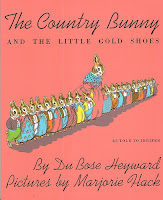"Books are love letters (or apologies) passed between us, adding a layer of conversation beyond our spoken words."
— Donalyn Miller, author of The Book Whisperer: Awakening the Inner Reader in Every Child
One recent afternoon we all trickled into the living room to read silently in the strong, clear light of late spring. We were sprawled out on the couches and the floor in our pajamas for hours. At some point, Miss. S. jumped up to her feet and broke the silence with an ecstatic cry.
“Mom! I just finished The Ghost Pony!”
“You did?” I asked, looking up from my own book at the clock. “It only took you two hours to finish?”
“It was sooooooooooooo good!” she cried. “You have to read it!”
“Really?” I affirmed with a smile.
“Yes!” She said, then paused thoughtfully for a minute. “Will you read it before I have to return it to the library, Mom?”
By now in the fairly short history of my life as a parent, I knew the second iteration of ‘mom’ meant that she wanted to be taken seriously. This wasn’t some sort of kind-but-altogether-blasé-gesture. She wanted me to read that book.
“Of course!” I said with a reassuring smile.
“Of course!” I said with a reassuring smile.
“You promise?”
“Absolutely,” I said.
The smile turned into a loppy, ecstatic grin that I couldn’t quite get off my face for the rest of the night.
My daughter wanted to share a book she had enjoyed with me. I closed The Prelude and got up to make dinner bathed in the strangest sensation. I had officially made it to the circle of paradise reserved for the bookish, the bibliophile . . . my daughter wanted to share a book she had enjoyed with me!
In the early years of motherhood, I had read the What to Expect books and made a point of becoming familiar with Dr. Spock. As such, when Miss S. started sleeping through the night at six months, I calmly observed the milestone. When she developed the coordination to be able to dress herself and to fold her own laundry . . . I was wholly prepared.
This was one of those developmental stages that surprised me with joy. None of the books ever talked about the stage of life when children will want to begin sharing their interior lives with parents by sharing their favorite books.
As I read The Ghost Pony later that night, I became increasingly sensible of the life of sharing books we have ahead of us . . . a life of our conversations extended and enriched through books, a life of responses offered to one another through the books that we share, a life in which we magnify the private humors and delights we have enjoyed in books by simply sharing them.
The fact of it awes me. To say I’ve always loved books is (duh! Wha? Doh!) a moot point. But there is something akin to Vulcan mind melding that happens when two or more people share their beloved books. Next to letters, it is the best way to craft those intimacies that we depend on to survive.






